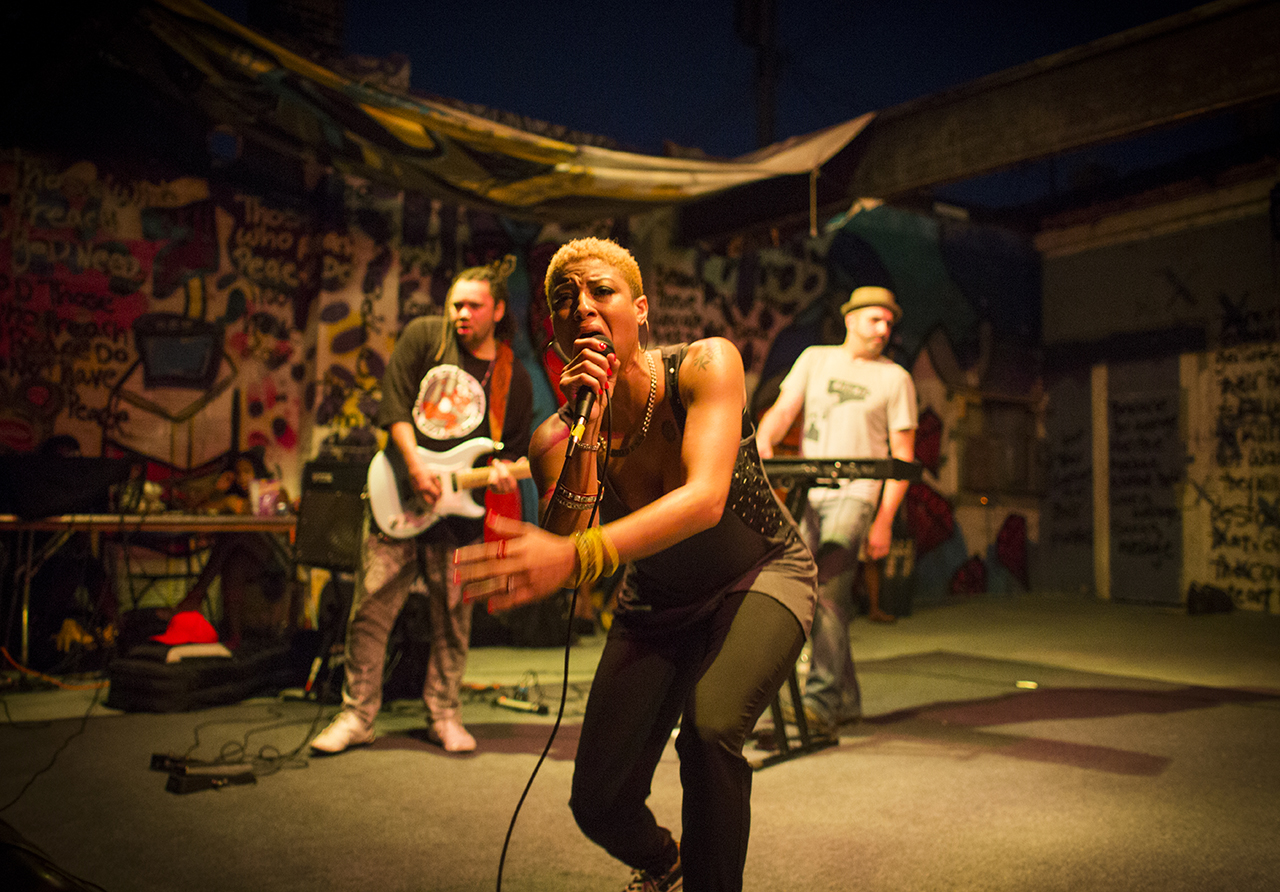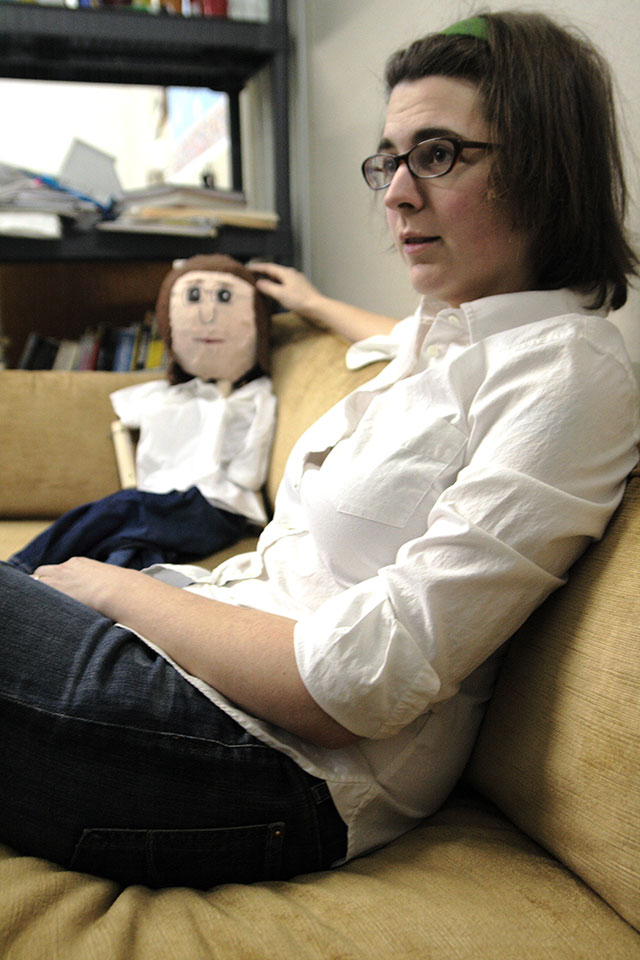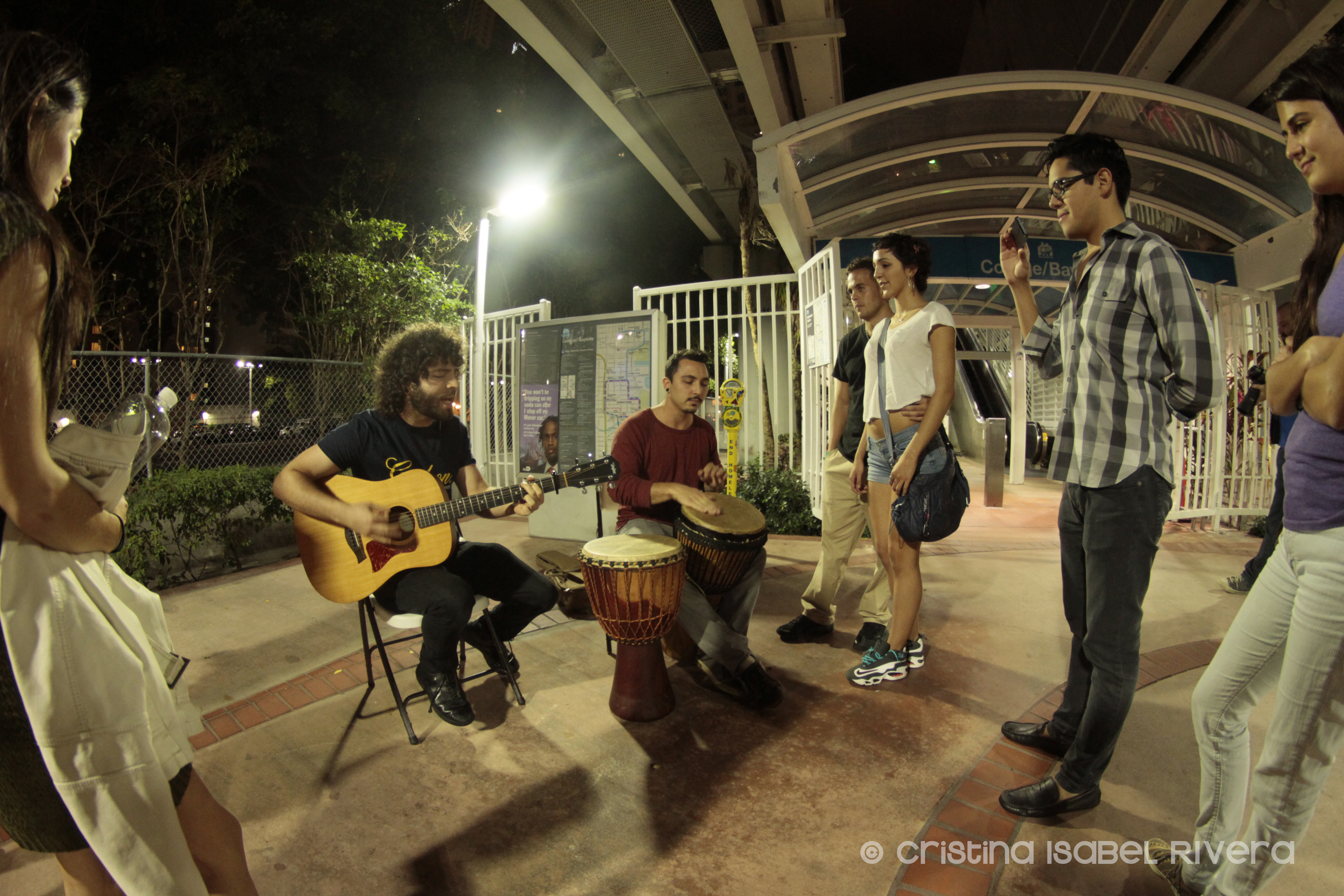
How they did It: Bringing art to nontraditional spaces
Above: Detroit’s Sidewalk Festival of the Arts, by Cheryl Willard Photography.
For the average patron, going to see some art generally means heading to a gallery, a theater or a museum. There’s nothing wrong with that, of course. Dedicated art spaces are a vital part of any healthy community. But when art is presented in an unexpected or nontraditional environment, the stakes are changed. Artists get to not only expand their personal boundaries, but also connect with the community in ways that might not be possible in a more sanctioned space.
“We really want to give audience members and community members a chance to experience art in a different way,” said Ryan Johnson, founder and curator of the Sidewalk Festival of Performing Arts. The festival draws artists from a wide range of disciplines to Detroit’s Artist Village, an outdoor space and business district encompassing several city blocks. “Not only are we looking for artists who can create work that addresses things that are relevant to the community, but also any sort of artwork that can involve people.
“When you’re walking down the street you’re not just a spectator but a participant or a co-creator in what that work looks like.”
Of course, it’s not as simple as setting up your art and expecting the audience to come running. “When you’re going into a neighborhood, you can’t really go in thinking, ‘This is what I want to do,’” Johnson said. “You have to think, ‘What does the community want to see?’ But as a curator you have to balance that. You can’t always just say, ‘What do you want to see, community?’ and think you’re going to get any kind of a straight answer.
“I look at Sidewalk as a service to the community rather than something that we’re asking them for. When it comes to programming and curating, we want to think about what would be something that the community would want to see? Who are the artists that are in the community? What are ways that we can be involved with conversations that are already happening here, and celebrate the spirit of what’s already happening here?”

Detroiter Carrie Morris with a puppet.
Fellow Detroiter Carrie Morris fully agrees with that organic approach to community-oriented art. Her Outdoor Puppet Spectacle series brings elaborate, elegantly produced puppet performances to both outdoor spaces and renovated performance areas inside vacant houses.
“This idea of spotlighting the incredible things that are already taking place around you is much more resonant to me than going in and planning to do your own thing without seeing or sharing resources. It’s like trying to generate something new from within a vacuum.”
Beyond just finding art that suits a community’s needs, Morris stresses the importance of also letting the community shape the art. “Part of the Outdoor Puppet Spectacle series is about elevating these elements to larger-than-life status, emphasizing the roles they play in their communities. I think anyone wanting to organize a large-scale spectacle performance could start by taking the time to think about the things around them that are deserving of some additional attention, or forms of movement or transport that may be easily available.
“Have you ever seen puppets on a bus? Puppets by boat? If you live in a big bike town, what do bike puppets look like? I have no idea, but I bet constructing any of the above with other like-minded folks is a really fun place to start finding out.”

Buskerfest Miami, by Cristina Isabel Rivera.
Amy San Pedro, co-founder along with Justin Trieger of Miami’s annual street music showcase Buskerfest, notes that even a community with regular access to art isn’t necessarily getting art that suits its specific needs. She sees public performance as a way to give her local audience something special in the midst of the area’s vacationer-driven economy. Buskerfest takes place in mid-December, right in between the Christmas rush and the tourist-slanted Basel festival. “We focus on the event being produced for locals, by locals,” said San Pedro. “This is our way to give back to the Miami community, after the town has been taken over!”
Buskerfest performances turn up in all manner of outdoor spaces along Miami’s Metro Mover public transit lines, but San Pedro downplays the idea of performances in nontraditional venues being anything revolutionary. “It is our opinion that the space is only nontraditional if looked at from the standard venue perspective. Artists have been performing on the streets and in public spaces for centuries.”
While an expansive outdoor art project does present some logistical challenges that a gallery show doesn’t, San Pedro said the trick is all in the execution. “Each individual performance site setup is relatively simple. The real challenge is orchestrating the number of performers, geographically spread over numerous city blocks, for four hours, with no rehearsal. The only way to tackle this is with extreme organization, a great, fast-thinking, calm team and clear, timely information dissemination, and our amazing volunteers.”
All three artists say they’ve seen nothing but love from the local businesses and institutions that help make their work possible. Most seem to welcome the disruption of business as usual and gladly join in the fun. “The most interesting non-hurdle is getting the downtown community to embrace Buskerfest Miami,” said San Pedro. “We now partner with other organizations throughout the year to produce outdoor and indoor events. Downtown residents, business owners and visitors have come to appreciate the joy street performance brings to the Central Business District.”
“We have to have the businesses on board because it is in a commercial district and we do close the streets,” said Johnson. “For each of them we try to find an interesting way to get them involved, whether it be hosting an artist in their space or some kind of unique take, like an artist wants to make a work dedicated to the business owners, or something to display on their counter.”
If there’s a unifying theme to all of these nontraditional performances, it’s the concept of art as not just something for an audience to see, but something for a community to experience, often from conception to completion. “We enlist our neighbors as a way to help get the word out,” said Morris. “Flyering, writing up chalk signs and holding outdoor rehearsals are all ways we open up what we are doing to anyone nearby who might want to stop and see a show, or residents who are even walking by and might want to sit for a minute to watch us rehearse.”
“We dedicate a lot of time to going to community meetings, meeting with block clubs and community organizations, having conversations with business owners. And then working with artists who are local and know the space, know the environment,” said Johnson. “I think it’s important, trying to ask those questions and be thoughtful about what you’re doing in a community, if that’s where you want to work. You’re not working for yourself, you’re working for them.”
This post is part of a series on how Knight Arts Challenge winners are bringing their ideas to fruition.
Recent Content
-
Artsarticle ·
-
Artsarticle ·
-
Artsarticle ·

